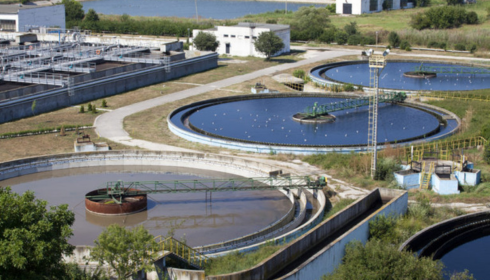If you’ve ever turned on your kitchen tap without thinking twice, you’re not alone. Most of us rarely pause to consider how water travels from rivers, lakes, or underground reservoirs to our homes, clean and safe to drink. Behind that seemingly simple act of filling a glass, though, lies a huge amount of infrastructure, science, and—let’s be honest—hard work by people who often go unnoticed. That’s where your local municipal water treatment company steps in, quietly protecting public health every single day.
Why Municipal Treatment Matters More Than Ever
It’s easy to assume clean water is a given. Flip the faucet handle, and there it is. But reality is more fragile. Our population keeps growing, climate shifts stress existing water supplies, and industries continue to introduce complex pollutants into rivers and lakes. Without large-scale treatment, cities would struggle to provide safe drinking water and to manage the wastewater that comes from households, businesses, and factories.
Think about it for a second: one small contamination event could impact thousands, even millions, of people. Treatment facilities act as that invisible shield, balancing public safety, environmental care, and urban growth.
The Science Behind the Tap
At its core, water treatment is both simple and endlessly complex. The basics—coagulation, sedimentation, filtration, disinfection—haven’t changed in decades. But the tools, monitoring systems, and innovations have evolved at lightning speed. Today’s operators rely on advanced sensors, AI-powered monitoring, and sustainable methods to keep water safe.
Wastewater treatment, for example, doesn’t just make dirty water “less dirty.” Through layers of biological, chemical, and physical processes, it restores water so it can safely return to rivers or even be reused. That means every time you flush a toilet, shower, or run the washing machine, your city’s municipal wastewater treatment services are already at work, protecting rivers, soil, and the broader ecosystem.
Beyond Safety: Economic and Social Impact
When we talk about treatment plants, we often focus on health, but there’s also an economic story here. Clean water underpins everything—restaurants, breweries, hospitals, schools, you name it. Without reliable treatment, industries would face higher costs for their own purification, and businesses might hesitate to invest in certain regions.
There’s also a social trust factor. Communities with reliable systems attract residents, tourists, and businesses because people feel confident in the infrastructure. No one wants to worry that the water they’re drinking might make them sick.
The Hidden Cost of Clean Water
Now, let’s address the question people hesitate to ask out loud: how much does it all cost? Building, operating, and maintaining water treatment systems isn’t cheap. Plants need constant upgrades, skilled operators, chemicals, energy, and a lot of behind-the-scenes maintenance. And of course, technology keeps moving forward, which means staying compliant with newer safety standards isn’t optional—it’s mandatory.
So, when people look up something like municipal water filtration systems cost, they’re often surprised. The answer isn’t a neat number. Costs vary widely depending on the size of the city, local water sources, treatment technology, and regulatory requirements. For a small town, expenses might feel manageable, while a large metro area could be talking millions each year just to keep things running smoothly.
Innovation Leading the Way
The good news? Innovation is helping cities cut costs and reduce environmental impact. Green infrastructure projects, advanced membrane filtration, energy recovery systems, and even the reuse of treated wastewater for irrigation or industrial purposes are becoming more common. In some cities, sludge from wastewater is turned into biogas, powering part of the treatment process itself.
This shift towards sustainability isn’t just about saving money—it’s about resilience. With droughts, floods, and shifting climate patterns, municipalities need flexible systems that can adapt without compromising quality.
People Behind the Process
It’s easy to get lost in the technology and numbers, but let’s not forget the human side. Skilled engineers, chemists, and operators show up every day to make sure communities don’t run dry. These professionals often work odd hours, handling emergencies most of us never hear about. When something goes wrong—say, a sudden chemical spill or a malfunctioning pump—they’re the ones who fix it fast so we can keep living our lives uninterrupted.
There’s also a growing emphasis on transparency. Many utilities now publish water quality reports, hold community Q&A sessions, and even use social media to share updates. It’s a quiet but meaningful way of building trust between citizens and the people running the systems.
Challenges on the Horizon
Of course, it’s not all smooth sailing. Funding is a major hurdle. Many treatment plants are decades old, struggling with outdated infrastructure while budgets stretch thinner and thinner. Rural communities in particular often lack resources to modernize their systems.
There’s also the issue of “forever chemicals” (PFAS), microplastics, and other contaminants that traditional treatment wasn’t designed to remove. Regulators are tightening standards, but retrofitting plants to meet these demands requires massive investment. It’s a balancing act between protecting health and keeping water affordable.
A Shared Responsibility
At the end of the day, water treatment isn’t just the job of the city or the plant operators. It’s a shared responsibility. Households can reduce strain by disposing of chemicals properly, conserving water, and staying informed about local issues. Businesses can support sustainable practices and advocate for infrastructure investments. And policymakers can ensure funding keeps pace with rising demands.
Communities that see water as a shared resource—not just a bill to pay—are the ones best positioned to thrive long-term.
Final Thoughts: Why It All Matters
The next time you sip a glass of water or watch rain wash down the drain, take a second to think about the journey it takes. Behind the scenes, complex systems, dedicated people, and evolving technologies make it all possible.
Clean water isn’t just a convenience—it’s a foundation of modern life. And while we rarely see the pipes, pumps, and labs that make it happen, their importance can’t be overstated. Whether it’s drinking water, wastewater, or storm runoff, municipal treatment systems are the quiet guardians of public health and community resilience.
So here’s the takeaway: clean water doesn’t happen by accident. It’s the result of investment, innovation, and dedication. And as the world faces new environmental and social challenges, these systems will only grow more important. Because when it comes to water, the future really does flow through the work happening today.

